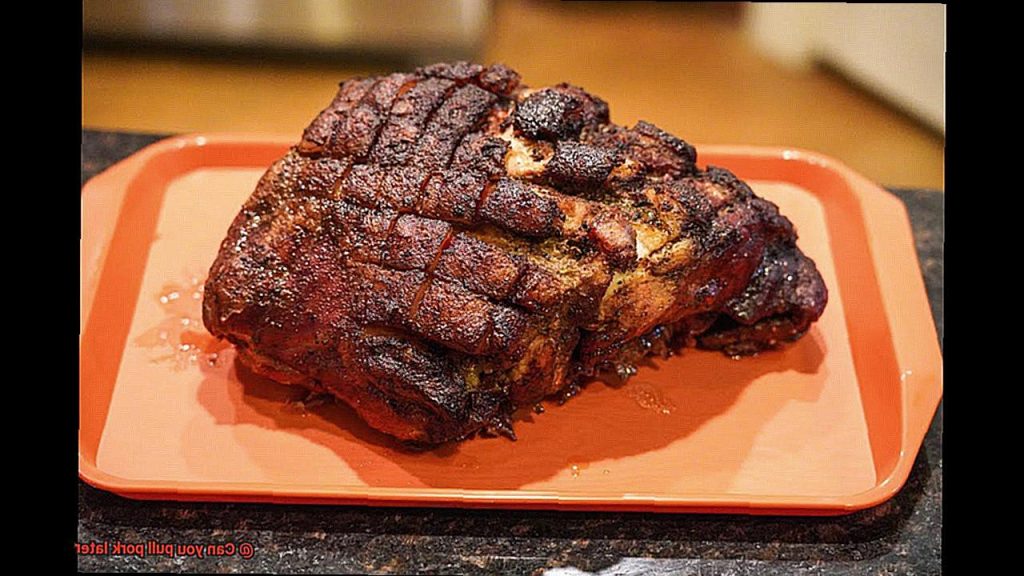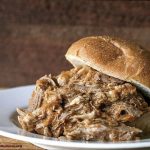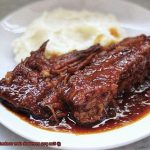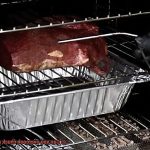Have you ever sunk your teeth into a mouthwatering pulled pork sandwich that effortlessly melted in your mouth, leaving you yearning for another bite? Ah, the beauty of perfectly pulled pork. But what if your dinner plans change, and you find yourself wondering, “Can you pull pork later?” Fear not, my fellow food enthusiasts, as we embark on a journey to uncover the secrets behind preserving the taste and texture of this delectable dish.
In the world of barbecue, pulling pork is an art form that demands expertise, patience, and an unwavering dedication to flavor. It involves slow-cooking a well-marinated pork shoulder or butt until it reaches a state of tender perfection. The result? Meat so tender it can be effortlessly shredded into tantalizing strands, bursting with smoky, savory, and subtly sweet notes.
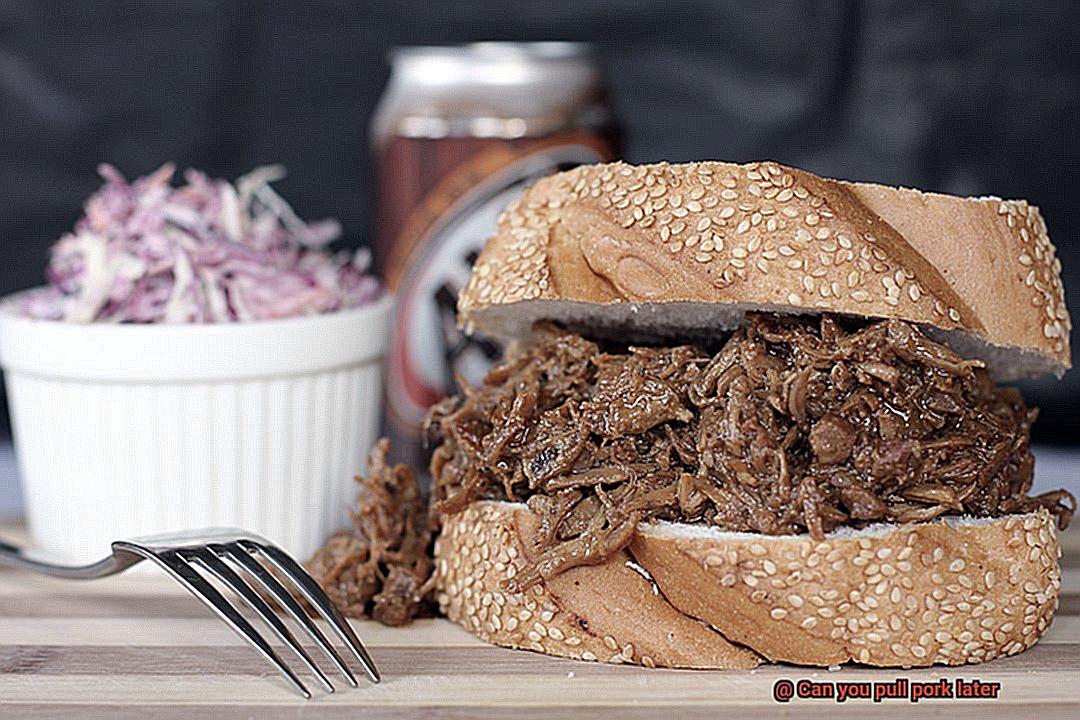
But what happens when life throws a curveball and forces us to postpone our meticulously planned feast? Can we still achieve that melt-in-your-mouth texture after the pork has cooled down or even spent a night in the refrigerator? Let’s delve deeper into the realm of pulled pork to uncover the answers.
Join me on this flavorful adventure as we explore the secrets and techniques behind pulling pork. We’ll also discuss optimal storage practices to ensure that you can savor that exceptional taste even when life doesn’t go according to plan. So grab a seat, prepare for some serious mouthwatering moments, and let’s embark on this tantalizing journey together.
Contents
What is Pulled Pork?
Pulled pork is a culinary masterpiece that originates from the heart of American barbecue culture. This tender, flavorful dish is made by slow-cooking pork shoulder for hours until it reaches a melt-in-your-mouth consistency. Whether you’re a grilling enthusiast or simply a lover of good food, understanding the art of pulled pork is essential. In this blog post, we will dive into the different types of pulled pork, explore the ingredients and cooking techniques used in its preparation, and offer some tips for creating the perfect pulled pork at home.
Types of Pulled Pork:
Pulled pork comes in various regional styles, each with its own distinct flavors and cooking methods. Here are some popular types:
- Carolina Style: Hailing from the Carolinas, this style features a tangy vinegar-based sauce. The pork is seasoned with a dry rub and slow-cooked over hickory wood, resulting in a smoky and tangy flavor.
- Kansas City Style: This style showcases a rich, sweet, and slightly spicy tomato-based sauce. The pork is seasoned with a dry rub and slow-cooked over a combination of hickory and fruit woods to impart a robust flavor.
- Texas Style: Simplicity is key in Texas-style pulled pork. Typically seasoned with just salt and pepper, the pork is slow-cooked over oak or mesquite wood for a distinctive smoky taste.
Ingredients and Preparation:
To create mouthwatering pulled pork, you’ll need a few key ingredients:
- Pork Shoulder: Also known as pork butt or Boston butt, this cut offers marbling and fat that keep the meat moist during cooking. Choose a bone-in shoulder for added flavor.
- Dry Rub: A combination of salt, pepper, paprika, garlic powder, onion powder, brown sugar, and various spices creates a flavorful dry rub. Adjust the quantities to suit your taste.
- Sauce: Depending on the regional style you’re aiming for, you may need a vinegar-based, tomato-based, or other types of barbecue sauce. Experiment and find your favorite flavor profile.
Cooking Techniques:
Here are a few cooking techniques that can help you achieve tender and succulent pulled pork:
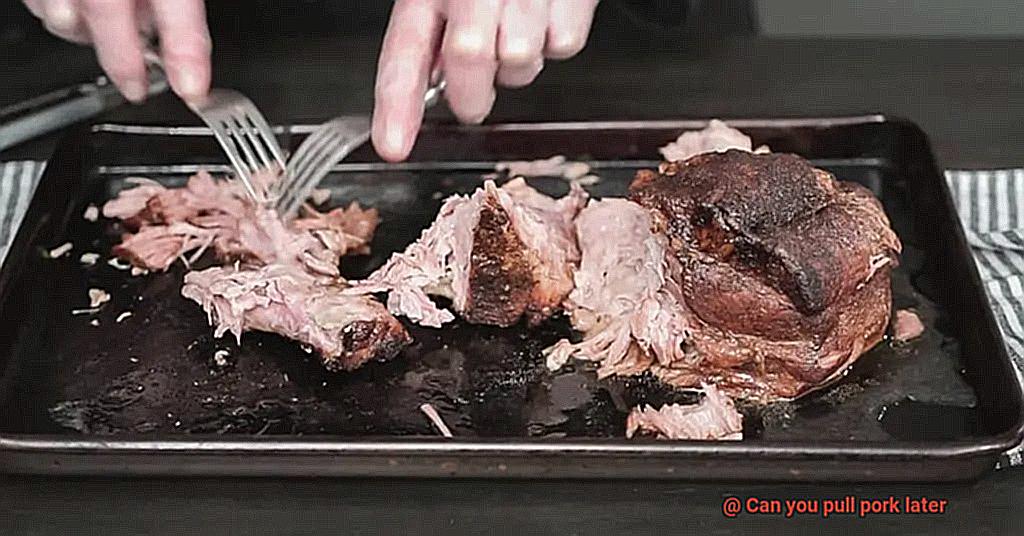
- Smoking: Use a smoker or barbecue pit to smoke the pork low and slow over indirect heat. This method allows the meat to absorb smoky flavors from wood chips or charcoal, resulting in a complex taste.
- Slow Cooker: If you don’t have access to a smoker or prefer a more convenient option, a slow cooker can yield delicious pulled pork. Season the pork, place it in the slow cooker with some liquid (like apple juice or broth), and cook on low for 8-10 hours until tender.
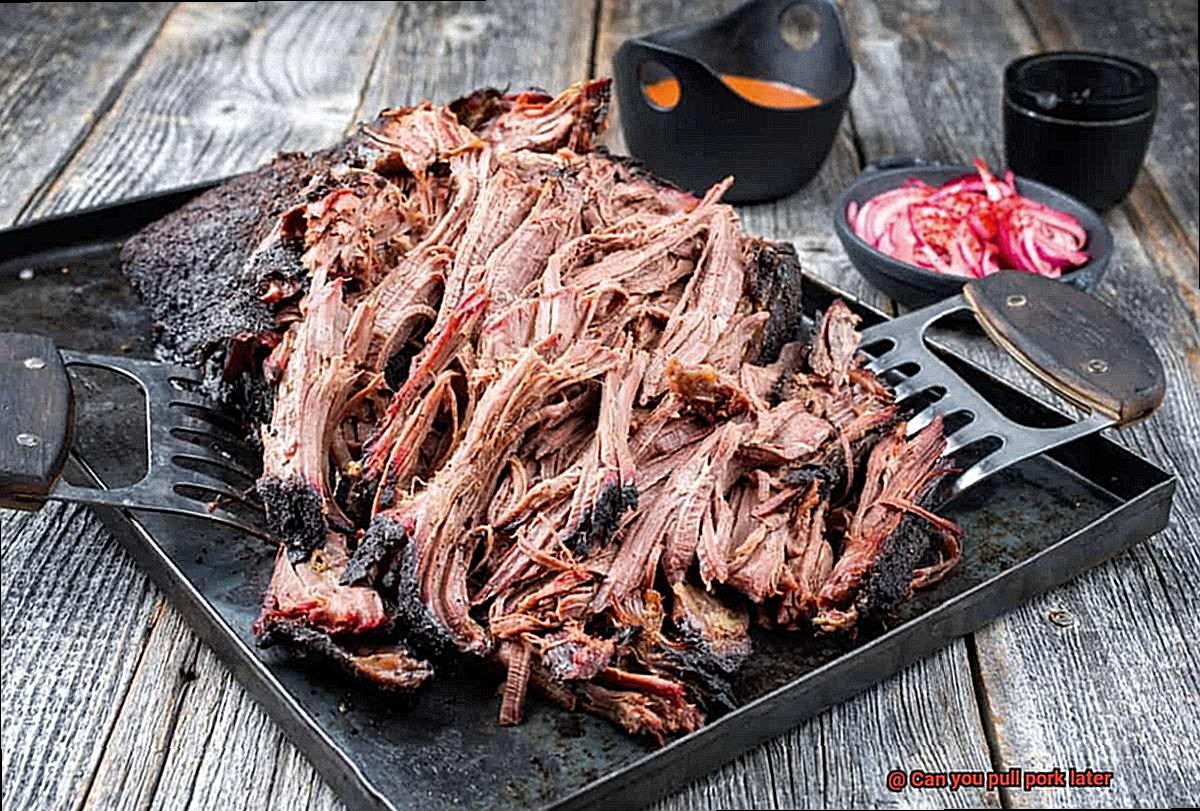
How to Store Pulled Pork for Later Use
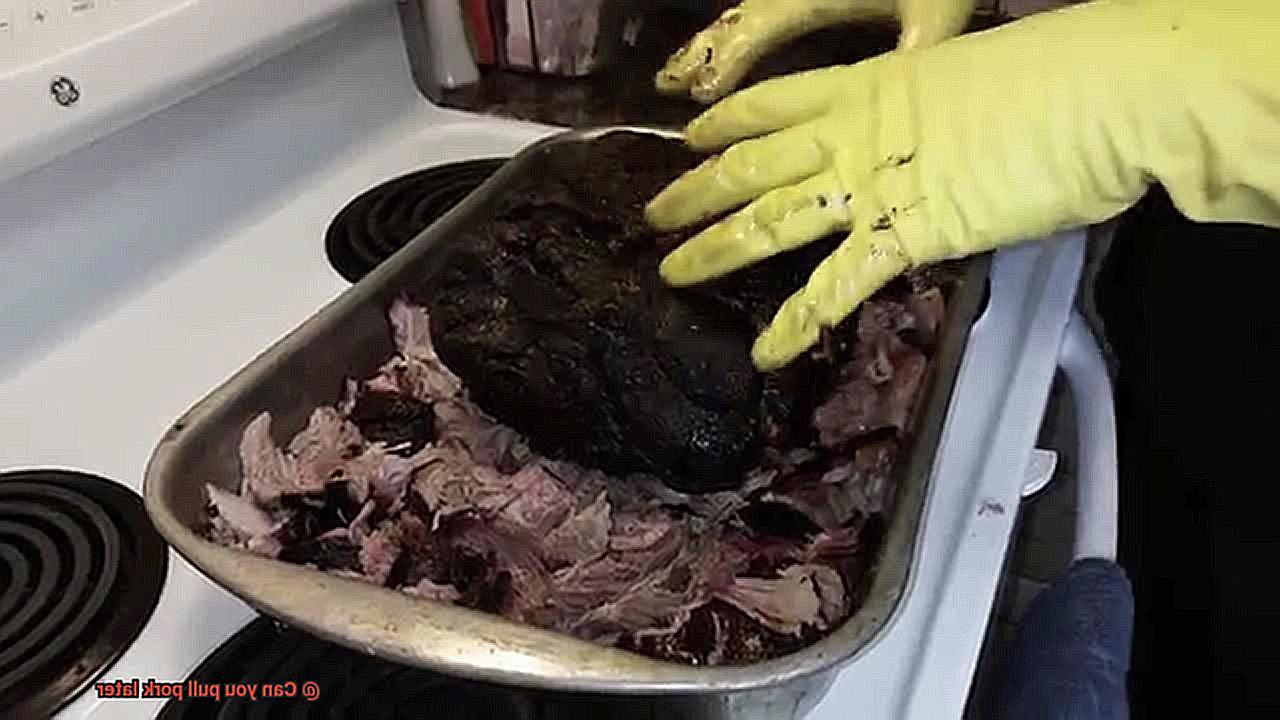
Don’t fret. This guide will walk you through the best practices for storing pulled pork to maintain its flavor and ensure your safety. Whether you plan to refrigerate or freeze it, these tips will help you enjoy mouthwatering pulled pork even on a later date.
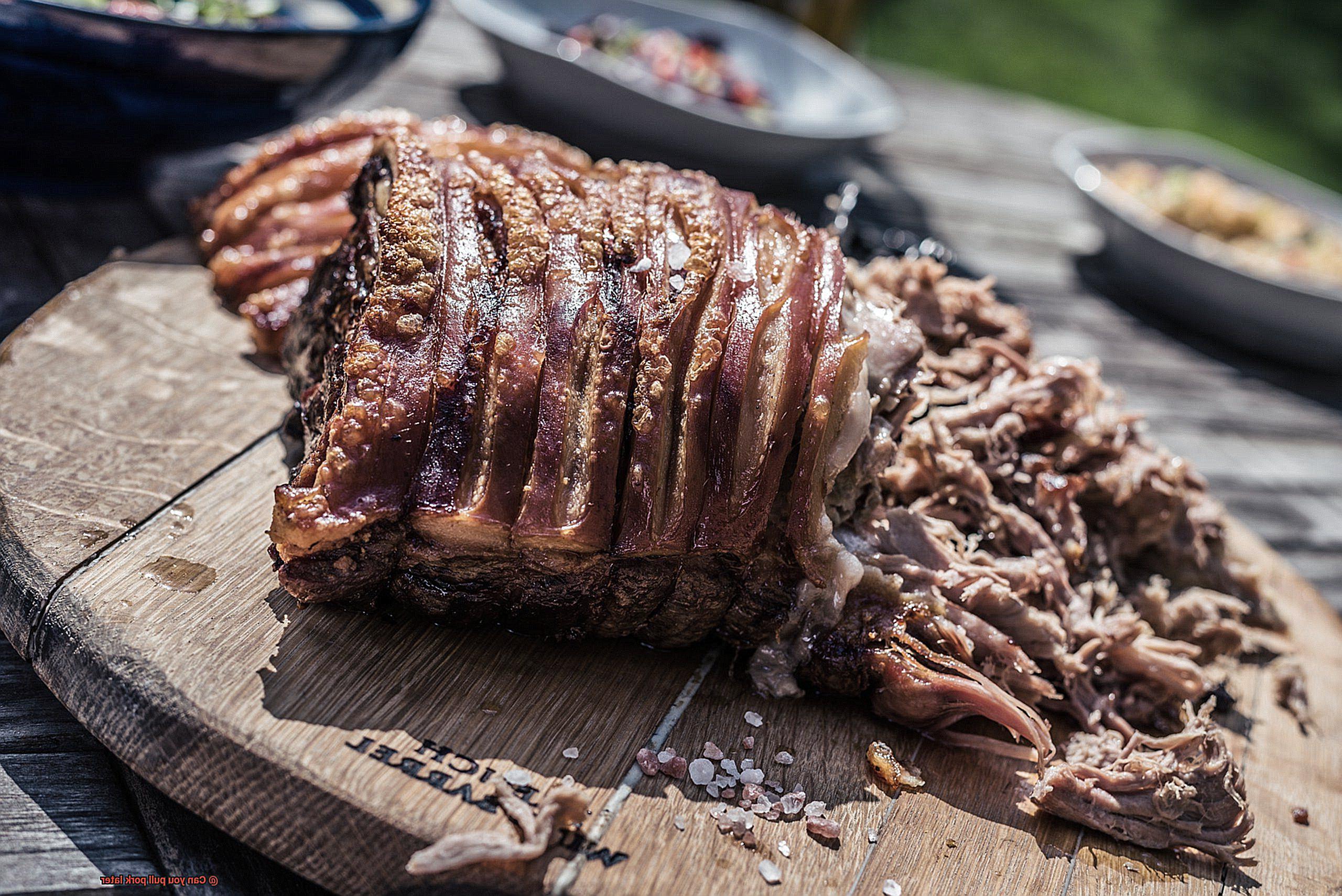
Cool Down and Package:
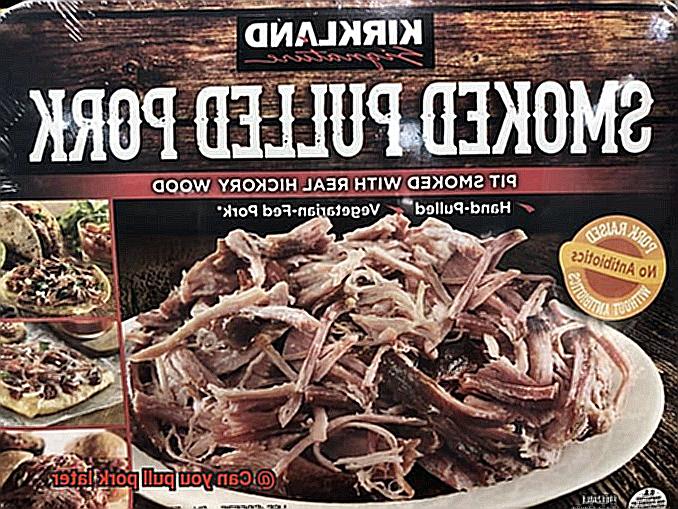
To maintain the freshness of your pulled pork, it’s crucial to let it cool down completely before storing. This step is essential in preventing the growth of bacteria. Once cooled, transfer the meat to a clean, airtight container or resealable freezer bags, ensuring there’s no excess air inside.
Portion Control:
Divide your pulled pork into smaller portions before storing. This allows for easier thawing and using only what you need without defrosting the entire batch. Plus, it helps maintain the quality of the meat when reheating.
Label and Date:
To avoid confusion and keep track of storage times, label your containers or bags with the date and contents. This simple step ensures that you always know how long your pulled pork has been stored and helps prioritize consumption.
Refrigeration Storage:
If you plan to enjoy the pulled pork within a few days, refrigeration is your best bet. When properly stored in the refrigerator, pulled pork can stay fresh for up to 3-4 days without compromising taste or safety.
Freezer Storage:
For longer-term storage, freezing is the ideal option. Pulled pork can be frozen for up to 3 months without significant loss of quality. However, consuming it within 1-2 months will guarantee optimal taste and texture upon reheating.
Thawing and Reheating:
To safely thaw frozen pulled pork, transfer it from the freezer to the refrigerator and allow it to thaw overnight. This gradual thawing process helps preserve the meat’s flavor and texture. When reheating, you can use methods like the microwave, stovetop, or oven, ensuring the meat reaches an internal temperature of 165°F (74°C) for safety.
Reheating Pulled Pork Safely
Picture this: you’ve just hosted an incredible barbecue party, and there’s still a mountain of mouthwatering pulled pork left. But how can you make sure that when you dig in next time, it’s just as delicious and safe to eat? Well, fear not. Today, I’m here to share the proper steps for reheating pulled pork safely. So let’s fire up the grill (or oven) and get cooking.
Storing Pulled Pork:
To maintain the quality and freshness of your pulled pork, it’s crucial to store it properly. Divide it into smaller portions and store them in airtight containers or ziplock bags. Refrigerate within two hours of cooking to prevent bacterial growth.
Thawing the Pulled Pork:
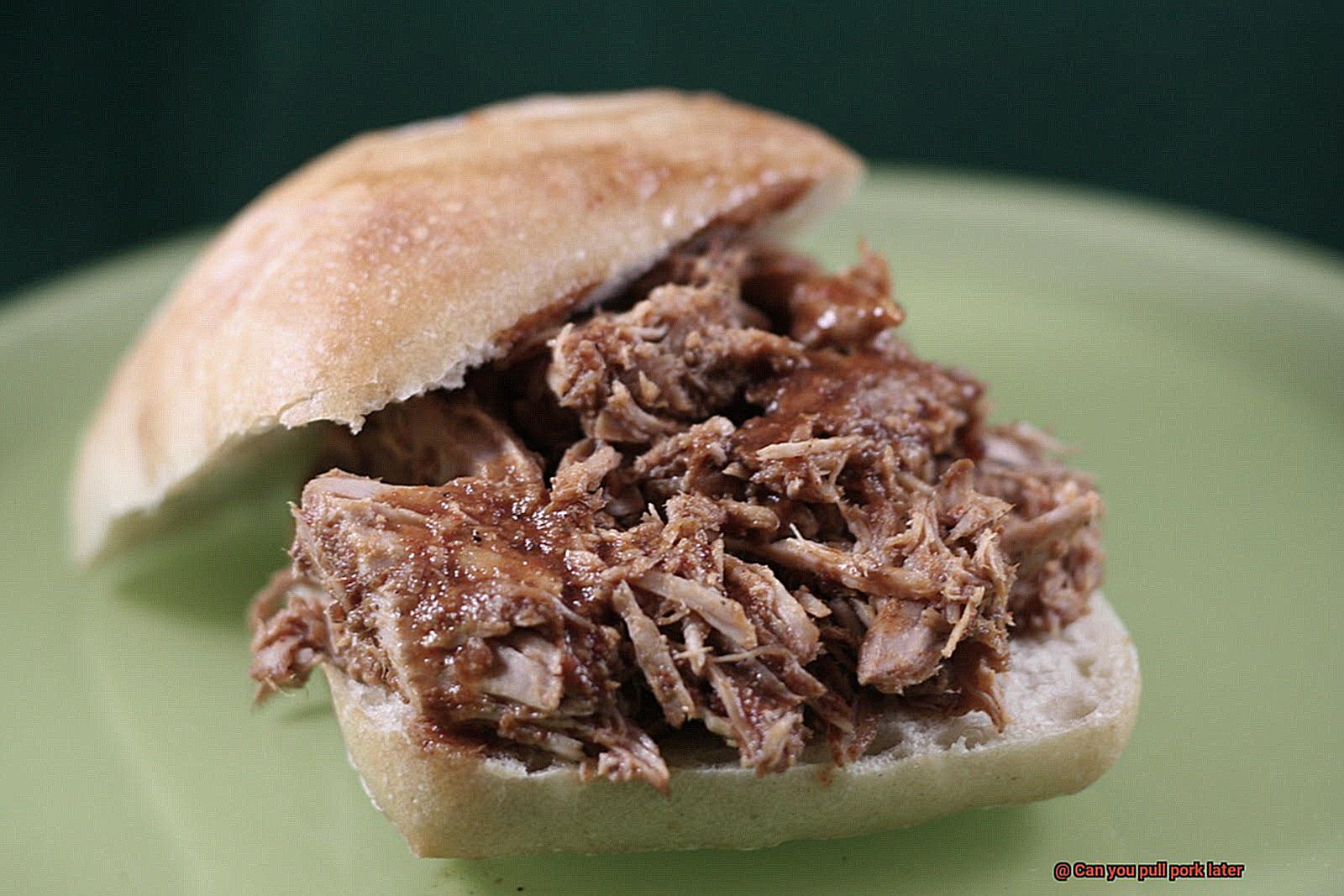
If you’re reheating frozen pulled pork, ensure proper thawing. The safest methods are thawing overnight in the refrigerator or under cold running water. Avoid leaving it at room temperature, as this can invite unwanted bacteria to the party.
Reheating in the Oven:
Preheat your oven to 325°F (163°C). Place the pulled pork in a shallow baking dish or on a baking sheet, and cover with foil to retain moisture. Pop it into the oven for 20-30 minutes or until the internal temperature reaches 165°F (74°C) using a meat thermometer.
Slow Cooker/Crockpot Reheating:
For a low-and-slow approach, use your trusty slow cooker or crockpot. Add a small amount of liquid like broth or barbecue sauce to prevent drying out. Set it on low heat and let your pulled pork heat up for 2-4 hours, stirring occasionally. Don’t forget to check the internal temperature before serving.
Microwave Reheating:
When time is of the essence, the microwave can save the day. Place the pulled pork in a microwave-safe dish, cover with a lid or plastic wrap (leaving a small vent), and heat on medium power. Stir occasionally to ensure even heating, and make sure the internal temperature reaches 165°F (74°C) before devouring.
Remember:
- Never leave reheated pulled pork at room temperature for more than two hours.
- Promptly refrigerate or freeze any leftovers after reheating to maintain food safety.
- Keep in mind that repeated reheating can affect the texture and flavor of the meat, so enjoy it while it’s still fresh.
Freezing Pulled Pork for Long-Term Storage

Freezing is a fantastic option for preserving its mouthwatering flavor and texture. In this comprehensive guide, we will explore the key considerations when freezing pulled pork for long-term storage. From proper packaging and storage temperature to thawing and reheating techniques, we’ve got you covered. So, grab your apron and let’s dive into the ultimate guide for freezing pulled pork.
Proper Packaging:
To prevent freezer burn, use airtight containers or freezer bags.
- Seal the packaging after removing as much air as possible.
- For ultimate protection against freezer burn, vacuum-sealed bags are an excellent option.
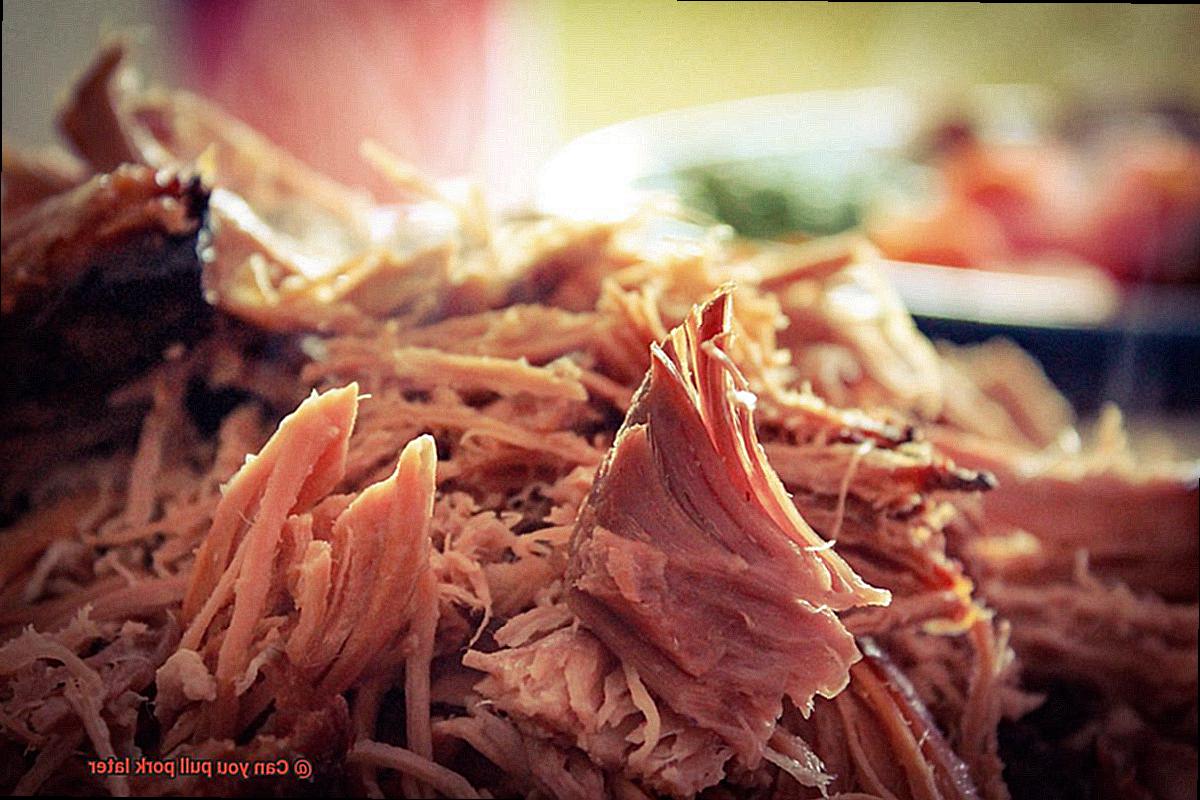
Storage Temperature:
- Maintain a freezer temperature of 0°F (-18°C) or below for optimal safety and quality.
- Regularly check and adjust the freezer temperature accordingly.
Portion Control:
- Divide pulled pork into smaller portions before packaging for easier thawing.
- Smaller portions freeze faster, preserving the pork’s texture and flavor.
Labeling:
- Clearly label each package with the date of freezing.
- Prioritize consuming the oldest portions first to avoid any wastage.
Thawing:
- Gradually thaw pulled pork by transferring it from the freezer to the refrigerator.
- Allow it to thaw overnight or for several hours until fully defrosted.
-
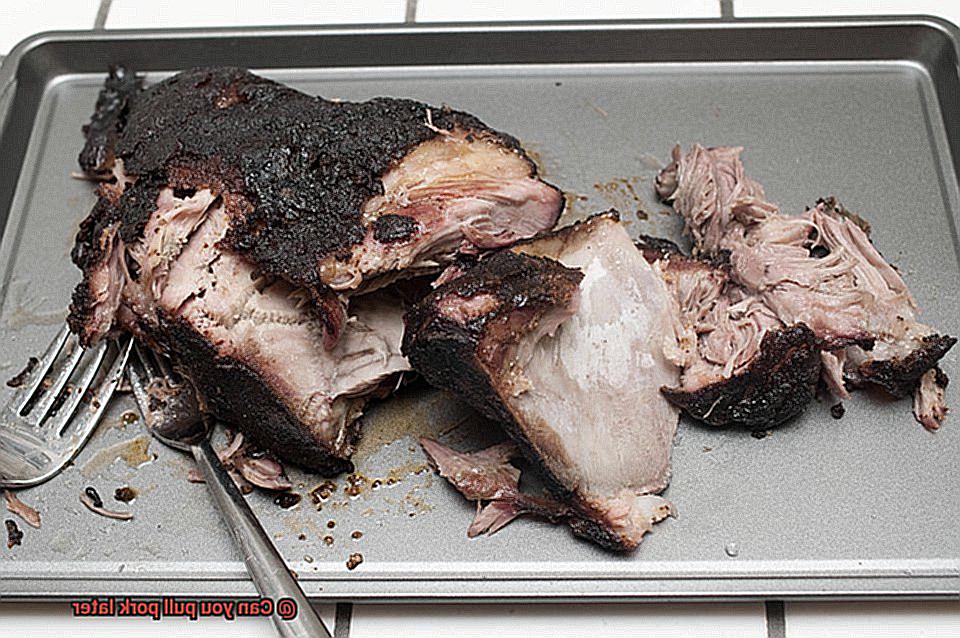
- Avoid thawing at room temperature to prevent bacterial growth.
Reheating:
- Thoroughly reheat pulled pork until it reaches an internal temperature of 165°F (74°C) to ensure food safety.
- Use stovetop heating, oven heating, or a slow cooker for reheating.
The Effect of Time on Pulled Pork Quality
Prepare to embark on a tantalizing journey through the world of pulled pork as we delve into the impact of time on its exquisite quality. From the slow and steady cooking process to the resting period and the art of holding and reheating, we will explore how time transforms this barbecue favorite into a succulent masterpiece.
Slow Cooking: The Key to Tender Perfection
Patience is paramount when it comes to cooking pulled pork. The amount of time you invest in the cooking process directly affects the tenderness of the meat. A lack of time results in tough, chewy strands, while excessive cooking can lead to a mushy, dry texture. To achieve melt-in-your-mouth deliciousness, opt for a low and slow cooking method at temperatures between 225-250°F (107-121°C) for several hours. This gentle heat allows the connective tissues and collagen to break down, resulting in unrivaled tenderness.
Resting Time: Unleashing Flavorful Bliss
Once your pork reaches its desired doneness, resist the urge to dig in immediately. Allowing it to rest for at least 30 minutes before pulling it apart is essential. During this crucial period, the juices redistribute, infusing every fiber with moisture and flavor. Resting also preserves the meat’s texture, preventing excessive dryness and ensuring an unforgettable dining experience.
Holding with Care: Nurturing Quality
While it’s possible to hold pulled pork, it’s vital to acknowledge that its quality can gradually decline over time. If you plan to hold it for a few hours after cooking, store it in a covered container or wrap it tightly in foil to retain its moisture. For more extended periods, employ a slow cooker or warming tray set on low heat to maintain its temperature. Remember, though, pulled pork is at its peak within a few hours of being pulled, delivering optimal flavor and tenderness.
Reheating: A Delicate Encore
Should you find yourself with leftovers or a desire to savor your pulled pork on another occasion, reheating demands finesse. Safeguard the meat from further drying by reheating it gently. Utilize a microwave, stovetop, or oven, ensuring the internal temperature reaches at least 165°F (74°C) before serving. This careful reheating process revitalizes the succulence of the meat, allowing you to relish its flavors anew.
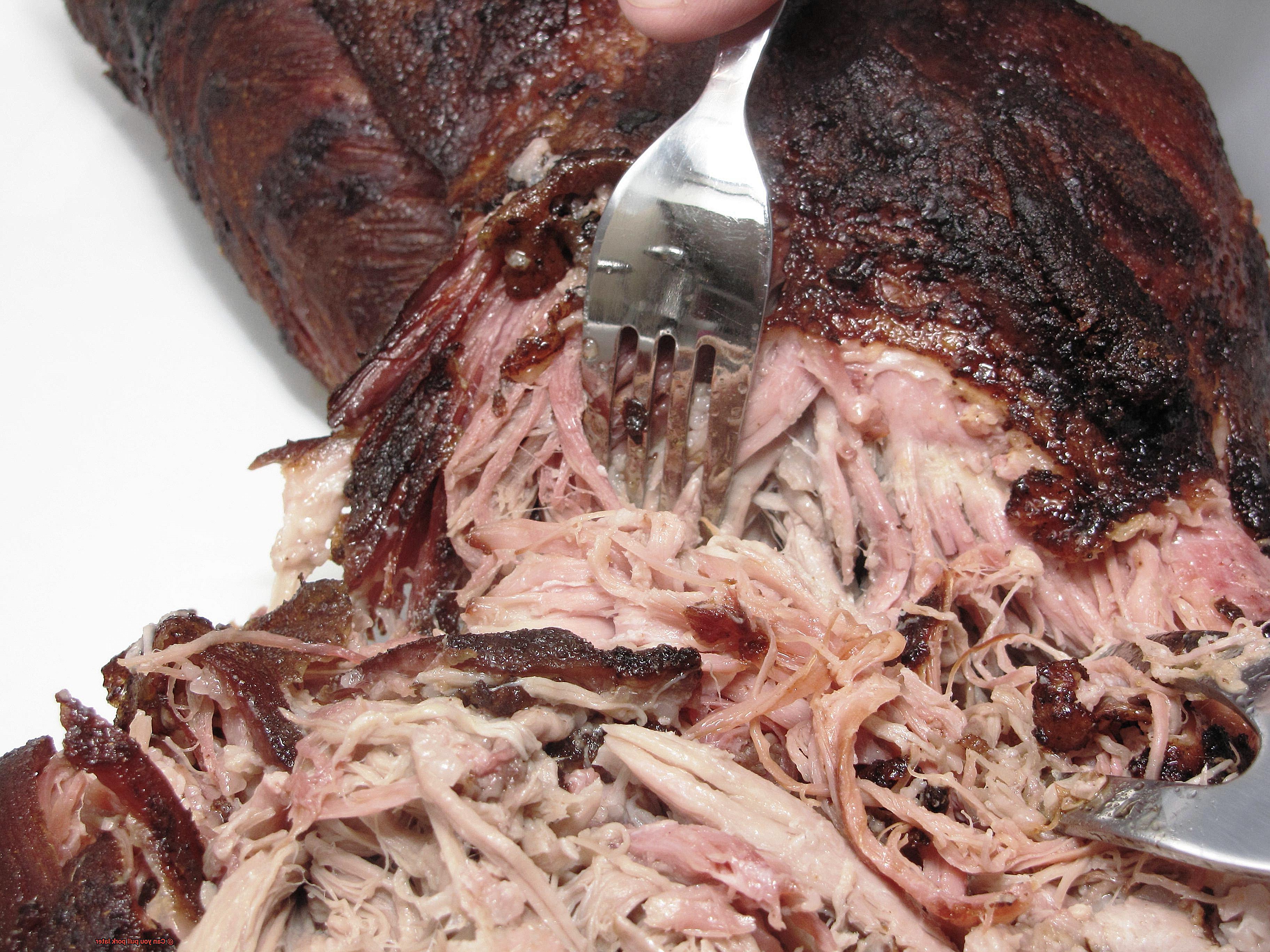
Maintaining Flavor and Moisture When Reheating
Maintaining flavor and moisture when reheating pulled pork is crucial to ensure that the meat remains tender and delicious. There are several methods you can use to achieve this, depending on your preferences and available equipment.
One important factor to consider when reheating pulled pork is the method of reheating. While there are various options such as microwaving, stovetop, oven, or grill, each method may yield different results in terms of flavor and moisture retention.
When using a microwave, it’s important to reheat the pulled pork slowly and at a low power setting. This helps prevent the meat from drying out and becoming tough. To retain moisture, add a splash of barbecue sauce or broth before microwaving and watch as the flavors meld together in a mouthwatering dance.
On the stovetop, you can reheat pulled pork by placing it in a saucepan with some liquid – water, broth, or even more barbecue sauce. Heat it up over low heat, stirring occasionally to make sure nothing sticks. The aroma will fill your kitchen as the pork becomes moist and succulent once again.
Reheating pulled pork in the oven is another popular method. Preheat the oven to a low temperature (around 250°F) and place the pulled pork in an oven-safe dish. Cover it tightly with foil or a lid to keep all that juicy goodness locked in. As the meat warms up slowly, its flavors will intensify, leaving you with a tantalizing dish.
Now, if you really want to up your pulled pork game, why not fire up the grill? Preheat your grill to medium heat and create an aluminum foil packet or use a heat-resistant dish for the pulled pork. Again, cover it up tightly with foil or a lid to trap in all that amazing flavor and moisture. As the pork sizzles on the grill, you’ll be greeted with smoky aromas that will make your taste buds dance with delight.
Regardless of the reheating method you choose, it’s important to monitor the temperature of the pulled pork and ensure it reaches a safe 165°F. This will keep any potential bacteria at bay and ensure that your meal is safe to devour.
To really amp up the flavor, don’t be afraid to add some extra seasonings or sauce when reheating. Whether it’s a splash of barbecue sauce, a sprinkle of spices, or a tangy kick from apple cider vinegar, these little additions can take your reheated pulled pork to the next level. Experiment with different flavors and find your own signature twist.
Food Safety Considerations When Reheating
Reheating food is a common practice to enjoy leftovers and save time in the kitchen. However, it’s important to understand and implement proper food safety considerations when reheating to prevent foodborne illnesses. In this guide, we will explore key factors to keep in mind when reheating food, ensuring both delicious and safe meals.
Temperature is Crucial:
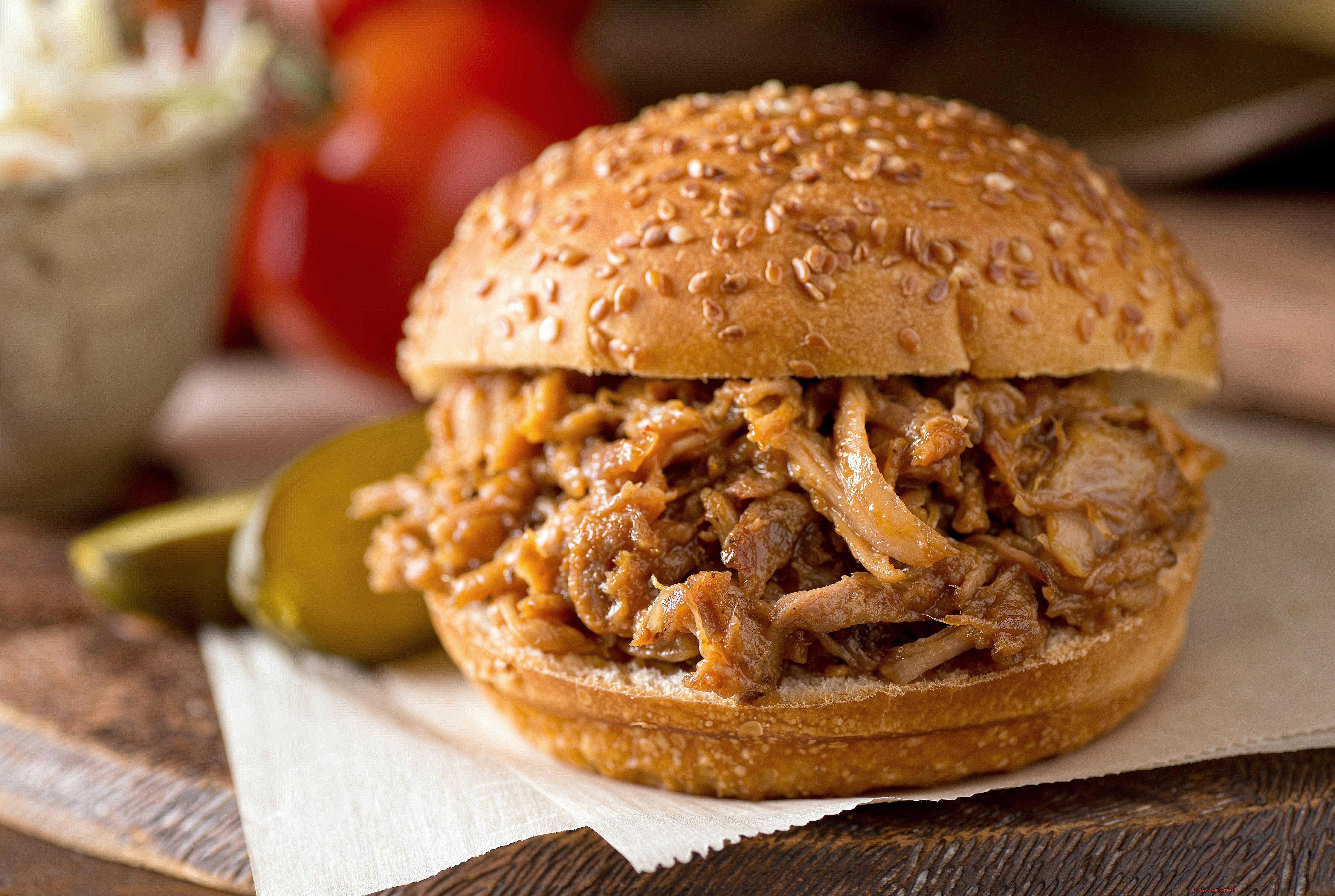
Achieving the right temperature is essential when reheating food. Bacteria multiply rapidly between 40°F (4°C) and 140°F (60°C), known as the “Danger Zone.” To eliminate any potential bacteria, ensure that the internal temperature of the reheated food reaches at least 165°F (74°C). Use a food thermometer to accurately monitor the temperature throughout the reheating process.
Time and Temperature Control:
Proper time and temperature control are vital to prevent bacterial growth. Refrigerate or freeze leftovers promptly after cooking to minimize the time spent in the Danger Zone. Consume refrigerated leftovers within 3-4 days and frozen leftovers within a reasonable timeframe. Be cautious not to leave cooked food at room temperature for an extended period, as it can promote bacterial growth.
Choose the Right Reheating Method:
Different foods require different reheating methods to retain their taste, texture, and safety. Consider these methods:
- Oven: Ideal for reheating large portions or dishes that need to maintain crispiness or moisture.
- Stovetop: Suitable for quick reheating of soups, sauces, and stir-fries.
- Microwave: Convenient for individual servings and quick reheating but may result in uneven heating.
- Steamer: Perfect for preserving moisture in delicate foods like vegetables or rice.
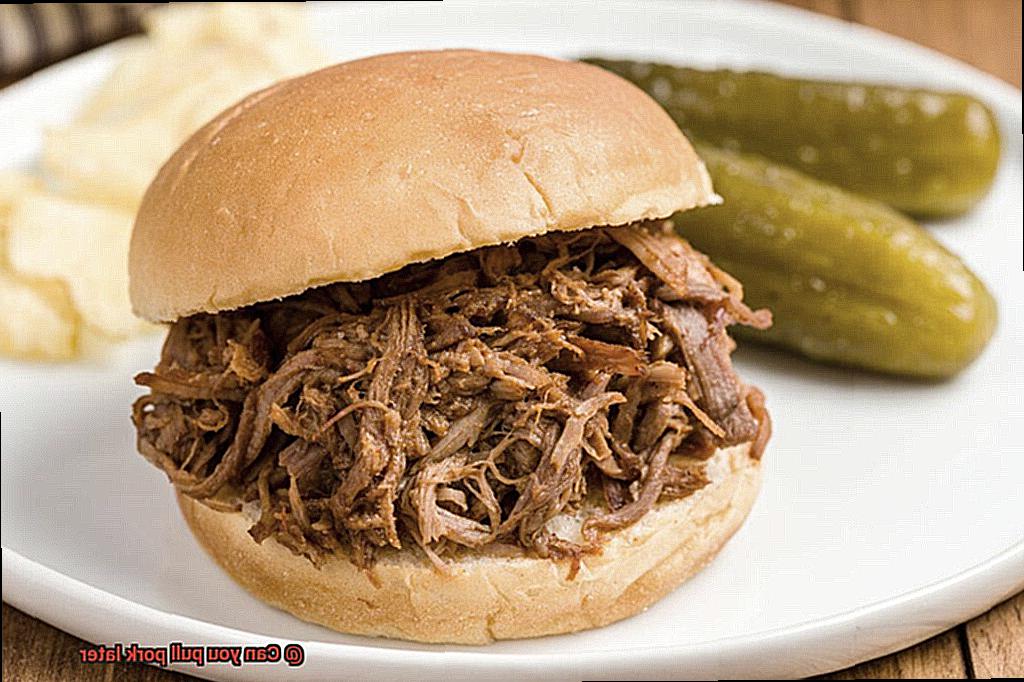
Stirring and Mixing:
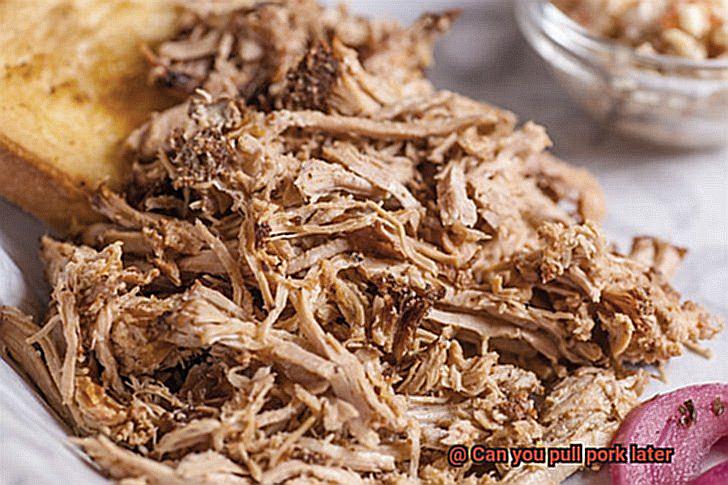
Stirring or mixing during the reheating process helps distribute heat evenly, ensuring all parts of the food reach the desired temperature. This is especially important for dishes with multiple ingredients or those that tend to heat unevenly.
Safe Storage and Reheating Containers:
Choose appropriate storage and reheating containers to maintain food safety. Glass or microwave-safe containers are ideal options as they can be transferred directly from the refrigerator to the microwave or oven without concerns about releasing harmful chemicals. Avoid using containers not suitable for reheating, such as plastics that may melt or leach chemicals into the food.
Reheat in Smaller Batches:
When reheating large quantities of food, it is best to do it in smaller batches. Reheating in smaller portions allows for more even heating, reducing the risk of undercooked or overheated sections. It also minimizes the time that the food spends at an unsafe temperature during the reheating process.
Tips for Preparing and Enjoying Leftover Pulled Pork
Not only does it offer the opportunity to enjoy the delicious flavors of slow-cooked pork again, but it also allows for creativity in the kitchen. In this guide, we will explore some tips and ideas for preparing and enjoying leftover pulled pork that will make your taste buds dance with delight.
Proper Storage
To ensure the quality and safety of your leftover pulled pork, it’s essential to store it correctly. Let the meat cool down before transferring it to an airtight container or resealable plastic bag. Refrigerate for up to four days or freeze for up to three months. Labeling the container with the date will help you keep track of its freshness.
Gentle Reheating
To prevent your pulled pork from drying out during reheating, choose gentle methods. A slow cooker or crockpot is perfect for this. Simply place the pulled pork in the slow cooker, add a bit of liquid like water or barbecue sauce, and heat on low for a few hours until warm and tender. The low and slow approach will maintain the meat’s juicy texture.
Versatile Uses
The beauty of leftover pulled pork lies in its versatility. Let your creativity shine by using it in various dishes. Add it to sandwiches, tacos, quesadillas, pizzas, or salads for a smoky and savory twist. The options are endless. Experiment with different seasonings and sauces to create unique flavor profiles.
BBQ Pulled Pork Sliders
For an irresistible handheld treat, make BBQ pulled pork sliders. Toast some slider buns, pile them high with reheated pulled pork, and drizzle with your favorite barbecue sauce. Top with crunchy coleslaw or tangy pickles for added texture and flavor. The combination of tender pulled pork, sweet and tangy barbecue sauce, and the freshness of the toppings will create a mouthwatering explosion of flavors.
Pulled Pork Nachos
Take your game day snacks to the next level with pulled pork nachos. Layer tortilla chips on a baking sheet, sprinkle shredded cheese over them, and then add reheated pulled pork on top. Bake in the oven until the cheese has melted, and then garnish with diced tomatoes, sliced jalapenos, sour cream, and guacamole. Each bite will be a fiesta of flavors.
rgPJxy_IngY” >

